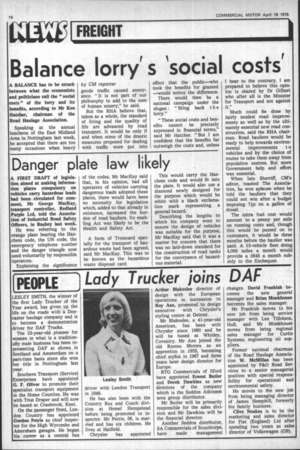Danger plate law likely
Page 16

If you've noticed an error in this article please click here to report it so we can fix it.
A FIRST DRAFT of legislation aimed at making information plates compulsory on vehicles carry hazardous loads had been circulated for comment, Mr George MacKay, transport controller, Redland Purple Ltd, told the Association of Industrial Road Safety Officers, in Bushey last week.
He was referring to the orange plate bearing the Hazchem code, the UN code, the emergency telephone number and the danger triangle now used voluntarily by responsible operators.
Explaining the significance of the codes, Mr MacKay said that, in his opinion, had all operators of vehicles carrying dangerous loads adopted these plates, there would have been no necessity for legislation which, added to that already in existence, increased the burden of road hauliers. Its enabling Act was likely to be the Health and Safety Act.
A form of Tremcard specially for the transport of hazardous waste had been agreed, said Mr MacKay. This was to be known as the hazardous waste disposal card. This would carry the Hazchem code and would fit into the plate. It would also use a diamond newly designed for the purpose which would be white with a black exclamation mark representing a general hazard.
Describing the lengths to which his company went to ensure the design of vehicles was suitable for the purpose, Mr MacKay said that it was a matter for concern that there was no laid-down standard for the construction of road tanks for the conveyance of hazardous material.




























































































